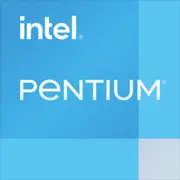Intel Pentium G2140

Intel Pentium G2140: Overview and Relevance in 2025
Architecture, Compatibility, and Use Cases of the Budget Processor
1. Key Specifications: Architecture and Performance
The Intel Pentium G2140, released in 2013, belongs to the Ivy Bridge line (3rd generation Intel Core). Despite its age, it retains niche popularity due to its low power consumption and ease of integration into older systems.
Architecture and Manufacturing Process
- Codename: Ivy Bridge (22 nm).
- Cores/Threads: 2/2 (no Hyper-Threading support).
- Base Frequency: 3.3 GHz (no Turbo Boost).
- Cache: 3 MB L3.
- TDP: 55 W.
Performance
According to Geekbench 6 benchmarks (2025):
- Single-Core: 551 points.
- Multi-Core: 917 points.
In comparison, the modern Pentium Gold G7505 (2024) scores around ~1200/2400 points. The G2140 is suitable for basic tasks but falls behind in multi-threaded scenarios.
Key Features
- Support for SSE4.2 and AVX instructions.
- Integrated Intel HD graphics (not relevant for gaming).
- Low heat output — suitable for compact PCs.
2. Compatible Motherboards
Socket: LGA 1155.
Chipsets: H61, B75, H77, Z75, Z77.
Selection Features
- New boards: Not produced since 2015. In 2025, only used options are available (price: $20–50).
- Recommendations:
- For office tasks: H61 (minimum cost).
- For overclocking (if the processor is unlocked): Z77.
- Check for USB 3.0 support (available in B75/H77/Z77).
Example: ASUS P8B75-M LX Plus (used) — a reliable option for $30.
3. Supported Memory
Memory Type: DDR3-1333/1600 MHz.
Maximum Capacity: 32 GB (depends on the motherboard).
Limitations:
- No support for DDR4/DDR5 — critical for modern applications.
- It is recommended to use two modules for dual-channel mode (e.g., 2x4 GB DDR3-1600).
Tip: If building a system from scratch, look for motherboards with 4 DDR3 slots.
4. Power Supply Recommendations
With a TDP of 55 W, even a modest PSU will suffice, but it's important to consider other components:
- Without a discrete graphics card: A 300 W PSU is sufficient (e.g., be quiet! SFX Power 3, $45).
- With a graphics card like NVIDIA GT 1030: Choose a PSU rated between 400–450 W (Corsair CX450, $55).
Important: Don't skimp on the PSU. Cheap models (<$30) can damage components.
5. Pros and Cons of the Pentium G2140
Pros:
- Energy Efficiency: Ideal for low-power builds.
- Price: Used processors cost $10–20.
- Compatibility: Easy to find spare parts on the secondary market.
Cons:
- Outdated Architecture: No support for DirectX 12, PCIe 3.0.
- Limited Multitasking: 2 cores struggle with rendering or streaming.
- DDR3: Slower than DDR4/DDR5 by 30–50%.
6. Use Cases
Office and Web Surfing
- Working with documents, email, Zoom.
- Example: A system with G2140 + 8 GB DDR3 + 240 GB SSD boots Windows 10 in 15 seconds.
Multimedia
- Playing Full HD video through VLC or Kodi.
- Problem: 4K is not supported by the integrated graphics.
Light Gaming
- Minecraft (40–60 FPS on low settings).
- CS:GO (30–40 FPS at 720p).
What to Avoid:
- Video editing, 3D modeling, modern games (Cyberpunk 2077, Elden Ring).
7. Comparison with Competitors
1. Intel Pentium Gold G7505 (2024):
- 2 cores/4 threads, DDR4-3200.
- Geekbench 6: 1200/2400.
- Price: $75 (new).
2. AMD Athlon 3000G (2025):
- 2 cores/4 threads, Vega 3 GPU.
- Support for DDR4.
- Price: $60 (new).
Conclusion: The G2140 lags in performance but is more affordable on the secondary market.
8. Practical Assembly Tips
1. Choosing an SSD: Kingston A400 240 GB ($25) will speed up the system.
2. Cooling: The stock cooler is sufficient, but for quieter operation, consider the Deepcool GAMMAXX 200T ($15).
3. Upgrade: Add a GTX 1650 graphics card (used, $80) for gaming.
4. OS: Use Linux (Lubuntu) or Windows 10 LTSC to save resources.
Example Build:
- Processor: G2140 ($15 used).
- Motherboard: ASUS P8H61-M ($25 used).
- Memory: 8 GB DDR3 ($20 used).
- Storage: 240 GB SSD ($25).
- PSU: 450 W ($55).
- Total: ~$140 (without graphics card).
9. Final Conclusion: Who Is the Pentium G2140 Suitable For?
This processor is a choice for:
- Enthusiasts on a tight budget building PCs from used components.
- Office systems where minimal cost is crucial.
- Media centers for Full HD content playback.
Why not buy it in 2025?
- Modern Pentium Gold and Athlon offer double the performance for $60–80.
- The lack of support for DDR4 and new interfaces (USB 3.2, NVMe) makes it outdated.
Conclusion: The G2140 is a temporary solution for specific tasks. For long-term use, it's better to choose a new budget CPU.
Basic
CPU Specifications
Memory Specifications
GPU Specifications
Miscellaneous
Benchmarks
Compared to Other CPU
Share in social media
Or Link To Us
<a href="https://cputronic.com/cpu/intel-pentium-g2140" target="_blank">Intel Pentium G2140</a>